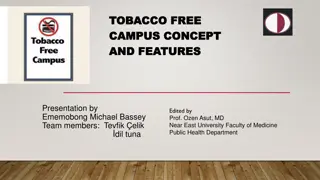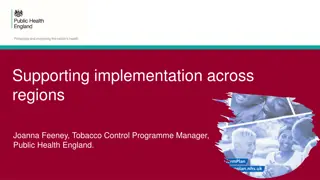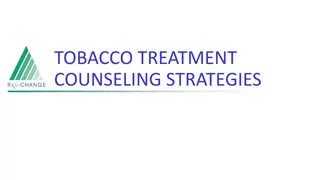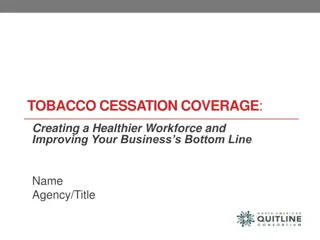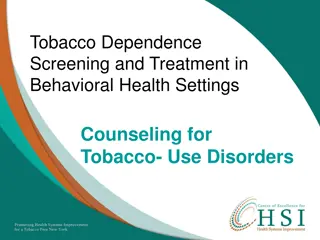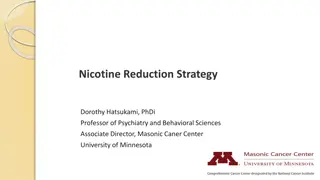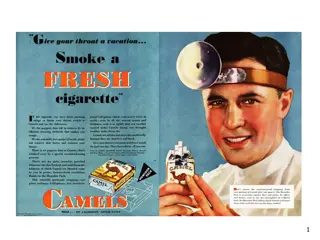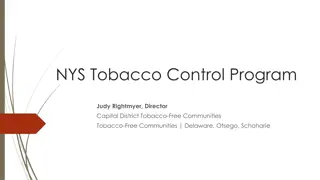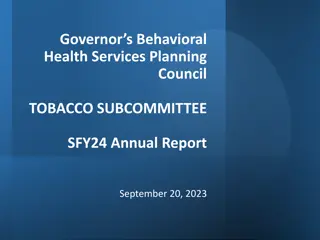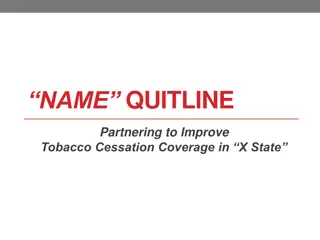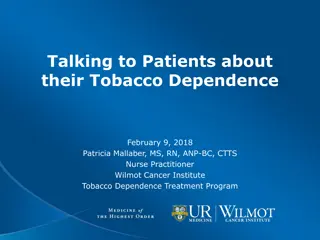Comprehensive Training Plan for Tobacco Dependence Treatment Services
Developing a structured training plan is crucial for enhancing the knowledge, skills, and competencies of healthcare professionals in tobacco dependence treatment. This plan facilitates improved patient care, staff satisfaction, and compliance with standards, leading to better clinical outcomes and organizational success. Key steps include identifying training needs, setting objectives, specifying content, selecting delivery methods, and monitoring effectiveness. Strategies for temporary staff, role-specific training, and a trust-wide approach are essential for a successful training program.
- Training plan
- Tobacco dependence treatment
- Healthcare professionals
- Patient care
- Professional development
Download Presentation

Please find below an Image/Link to download the presentation.
The content on the website is provided AS IS for your information and personal use only. It may not be sold, licensed, or shared on other websites without obtaining consent from the author. Download presentation by click this link. If you encounter any issues during the download, it is possible that the publisher has removed the file from their server.
E N D
Presentation Transcript
Developing a training plan for Tobacco Dependence Treatment Services Joanna Feeney
Tobacco Dependence Treatment Training Insights Absence access to local training Overwhelming support for a national training standard & structured training programme In-house training capacity is limited in many Trusts Consensus around a need for ongoing professional development
What is a training plan WHAT HOW WHO A training plan provides a structured approach to the development of the knowledge, skills and competencies across the workforce It considers the audience s specific needs, identifies desired learning outcomes, sets out the method and resources required to achieve these WHY WHEN
Benefits of a training plan For Organisations Improved quality of service & patient care Improved consistency & compliance with policies or standards Improved clinical outcomes Reduced staff turnover Supports cultural change Fosters innovation & talent development For Staff Improved knowledge, skills & confidence Stay up to date with latest evidence base Enhanced job satisfaction Creates opportunities for career development / progression
Key Steps developing a training plan Identify who needs training & what training needs are Set learning objective Specify training content Select training delivery methods Monitor & Evaluate effectiveness
Pathway specific Strategy for temporary / agency staff New staff, anticipating turn over Updates & refresher training Key considerations Capacity & Resources Staff availability Flexibility Sustainability
Best practice Trust-wide approach to training Role specific training Patient centred focus Clinical relevance Multi modal approach Continuous learning & Supportive learning environments Collaboration


